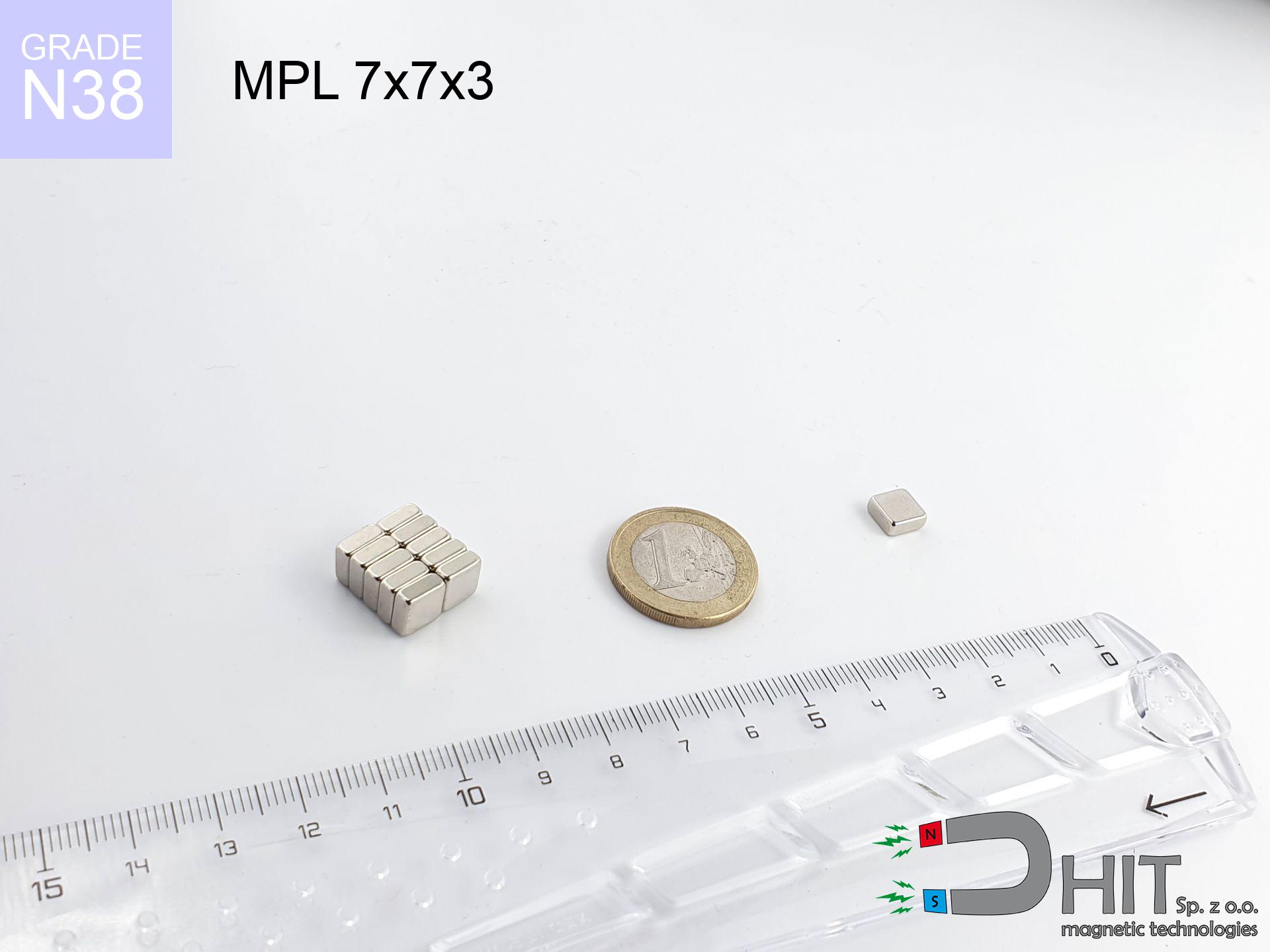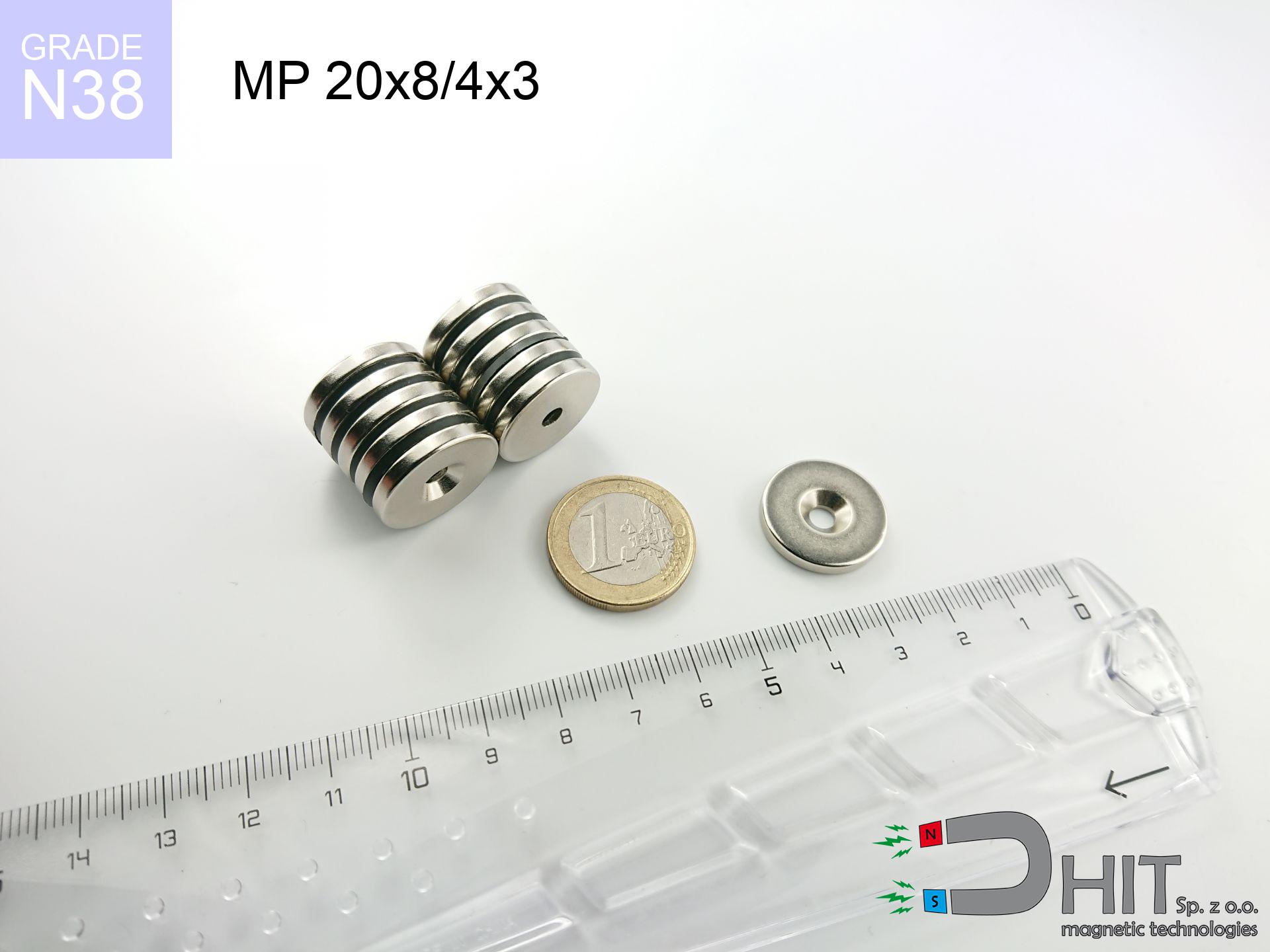SM 25x175 [2xM8] / N52 - magnetic separator
magnetic separator
Catalog no 130369
GTIN/EAN: 5906301813170
Diameter Ø
25 mm [±1 mm]
Height
175 mm [±1 mm]
Weight
660 g
Magnetic Flux
~ 8 500 Gauss [±5%]
541.20 ZŁ with VAT / pcs + price for transport
440.00 ZŁ net + 23% VAT / pcs
bulk discounts:
Need more?
Contact us by phone
+48 888 99 98 98
if you prefer get in touch using
our online form
the contact form page.
Weight and structure of a magnet can be reviewed with our
power calculator.
Orders submitted before 14:00 will be dispatched today!
Technical - SM 25x175 [2xM8] / N52 - magnetic separator
Specification / characteristics - SM 25x175 [2xM8] / N52 - magnetic separator
| properties | values |
|---|---|
| Cat. no. | 130369 |
| GTIN/EAN | 5906301813170 |
| Production/Distribution | Dhit sp. z o.o. |
| Country of origin | Poland / China / Germany |
| Customs code | 85059029 |
| Diameter Ø | 25 mm [±1 mm] |
| Height | 175 mm [±1 mm] |
| Weight | 660 g |
| Material Type | Stainless steel AISI 304 / A2 |
| Magnetic Flux | ~ 8 500 Gauss [±5%] |
| Size/Mount Quantity | M8x2 |
| Polarity | circumferential - 6 poles |
| Casing Tube Thickness | 1 mm |
| Manufacturing Tolerance | ±1 mm |
Magnetic properties of material N52
| properties | values | units |
|---|---|---|
| remenance Br [min. - max.] ? | 14.2-14.7 | kGs |
| remenance Br [min. - max.] ? | 1420-1470 | mT |
| coercivity bHc ? | 10.8-12.5 | kOe |
| coercivity bHc ? | 860-995 | kA/m |
| actual internal force iHc | ≥ 12 | kOe |
| actual internal force iHc | ≥ 955 | kA/m |
| energy density [min. - max.] ? | 48-53 | BH max MGOe |
| energy density [min. - max.] ? | 380-422 | BH max KJ/m |
| max. temperature ? | ≤ 80 | °C |
Physical properties of sintered neodymium magnets Nd2Fe14B at 20°C
| properties | values | units |
|---|---|---|
| Vickers hardness | ≥550 | Hv |
| Density | ≥7.4 | g/cm3 |
| Curie Temperature TC | 312 - 380 | °C |
| Curie Temperature TF | 593 - 716 | °F |
| Specific resistance | 150 | μΩ⋅cm |
| Bending strength | 250 | MPa |
| Compressive strength | 1000~1100 | MPa |
| Thermal expansion parallel (∥) to orientation (M) | (3-4) x 10-6 | °C-1 |
| Thermal expansion perpendicular (⊥) to orientation (M) | -(1-3) x 10-6 | °C-1 |
| Young's modulus | 1.7 x 104 | kg/mm² |
Table 1: Rod construction
SM 25x175 [2xM8] / N52
| Parameter | Value | Description / Unit |
|---|---|---|
| Diameter (Ø) | 25 | mm |
| Total length | 175 | mm (L) |
| Active length | 139 | mm |
| Section count | 6 | modules |
| Dead zone | 36 | mm (2x 18mm starter) |
| Weight (est.) | ~653 | g |
| Active area | 109 | cm² (Area) |
| Housing material | AISI 304 | 1.4301 (Inox) |
| Surface finish | Ra < 0.8 µm | Polished |
| Temp. class | 80°C | Standard (N) |
| Force loss (at max °C) | -12.8% | Reversible loss (physics) |
| Force (calculated) | 18.1 | kg (theor.) |
| Induction (surface) | ~8 500 | Gauss (Max) |
Chart 2: Field profile (6 sections)
Chart 3: Temperature performance
Elemental analysis
| iron (Fe) | 64% – 68% |
| neodymium (Nd) | 29% – 32% |
| boron (B) | 1.1% – 1.2% |
| dysprosium (Dy) | 0.5% – 2.0% |
| coating (Ni-Cu-Ni) | < 0.05% |
Environmental data
| recyclability (EoL) | 100% |
| recycled raw materials | ~10% (pre-cons) |
| carbon footprint | low / zredukowany |
| waste code (EWC) | 16 02 16 |
Other proposals
Strengths and weaknesses of neodymium magnets.
Advantages
- They retain full power for nearly 10 years – the loss is just ~1% (in theory),
- Neodymium magnets prove to be extremely resistant to loss of magnetic properties caused by magnetic disturbances,
- The use of an shiny layer of noble metals (nickel, gold, silver) causes the element to have aesthetics,
- Magnetic induction on the working layer of the magnet turns out to be maximum,
- Made from properly selected components, these magnets show impressive resistance to high heat, enabling them to function (depending on their shape) at temperatures up to 230°C and above...
- Thanks to freedom in constructing and the capacity to customize to individual projects,
- Key role in high-tech industry – they are utilized in computer drives, drive modules, medical equipment, as well as other advanced devices.
- Compactness – despite small sizes they generate large force, making them ideal for precision applications
Disadvantages
- At very strong impacts they can break, therefore we recommend placing them in strong housings. A metal housing provides additional protection against damage and increases the magnet's durability.
- NdFeB magnets demagnetize when exposed to high temperatures. After reaching 80°C, many of them experience permanent drop of power (a factor is the shape and dimensions of the magnet). We offer magnets specially adapted to work at temperatures up to 230°C marked [AH], which are very resistant to heat
- They oxidize in a humid environment - during use outdoors we recommend using waterproof magnets e.g. in rubber, plastic
- Limited ability of creating nuts in the magnet and complex shapes - recommended is cover - magnet mounting.
- Possible danger related to microscopic parts of magnets can be dangerous, in case of ingestion, which becomes key in the aspect of protecting the youngest. Additionally, small elements of these magnets are able to be problematic in diagnostics medical after entering the body.
- High unit price – neodymium magnets are more expensive than other types of magnets (e.g. ferrite), which can limit application in large quantities
Lifting parameters
Best holding force of the magnet in ideal parameters – what contributes to it?
- on a plate made of mild steel, effectively closing the magnetic field
- whose thickness is min. 10 mm
- with a plane free of scratches
- under conditions of gap-free contact (surface-to-surface)
- for force applied at a right angle (pull-off, not shear)
- at standard ambient temperature
What influences lifting capacity in practice
- Clearance – the presence of any layer (paint, dirt, air) acts as an insulator, which lowers power rapidly (even by 50% at 0.5 mm).
- Pull-off angle – note that the magnet has greatest strength perpendicularly. Under sliding down, the holding force drops significantly, often to levels of 20-30% of the nominal value.
- Plate thickness – too thin plate causes magnetic saturation, causing part of the power to be escaped to the other side.
- Steel grade – ideal substrate is high-permeability steel. Stainless steels may generate lower lifting capacity.
- Surface finish – ideal contact is possible only on smooth steel. Any scratches and bumps create air cushions, reducing force.
- Thermal factor – high temperature reduces magnetic field. Exceeding the limit temperature can permanently demagnetize the magnet.
Lifting capacity testing was carried out on plates with a smooth surface of optimal thickness, under perpendicular forces, however under attempts to slide the magnet the lifting capacity is smaller. Moreover, even a small distance between the magnet’s surface and the plate reduces the holding force.
Precautions when working with neodymium magnets
Electronic hazard
Do not bring magnets close to a purse, laptop, or screen. The magnetism can permanently damage these devices and wipe information from cards.
Life threat
Medical warning: Neodymium magnets can turn off heart devices and defibrillators. Do not approach if you have electronic implants.
Serious injuries
Large magnets can crush fingers instantly. Do not put your hand between two strong magnets.
Permanent damage
Regular neodymium magnets (grade N) lose power when the temperature exceeds 80°C. The loss of strength is permanent.
Allergic reactions
Allergy Notice: The Ni-Cu-Ni coating consists of nickel. If an allergic reaction appears, immediately stop handling magnets and wear gloves.
Combustion hazard
Drilling and cutting of neodymium magnets poses a fire risk. Neodymium dust reacts violently with oxygen and is hard to extinguish.
Shattering risk
Despite metallic appearance, the material is brittle and not impact-resistant. Do not hit, as the magnet may shatter into sharp, dangerous pieces.
Magnetic interference
Remember: neodymium magnets generate a field that interferes with sensitive sensors. Maintain a safe distance from your phone, device, and GPS.
Danger to the youngest
These products are not suitable for play. Swallowing multiple magnets may result in them pinching intestinal walls, which constitutes a critical condition and necessitates immediate surgery.
Conscious usage
Handle magnets consciously. Their powerful strength can surprise even experienced users. Be vigilant and respect their power.

![Magnetic bar SM 25x175 [2xM8] / N52 Magnetic bar SM 25x175 [2xM8] / N52](https://cdn3.dhit.pl/graphics/banners/magnet.webp)
![SM 25x175 [2xM8] / N52 - magnetic separator](https://cdn3.dhit.pl/graphics/products/sm-25x175-2xm8-gif.jpg)





